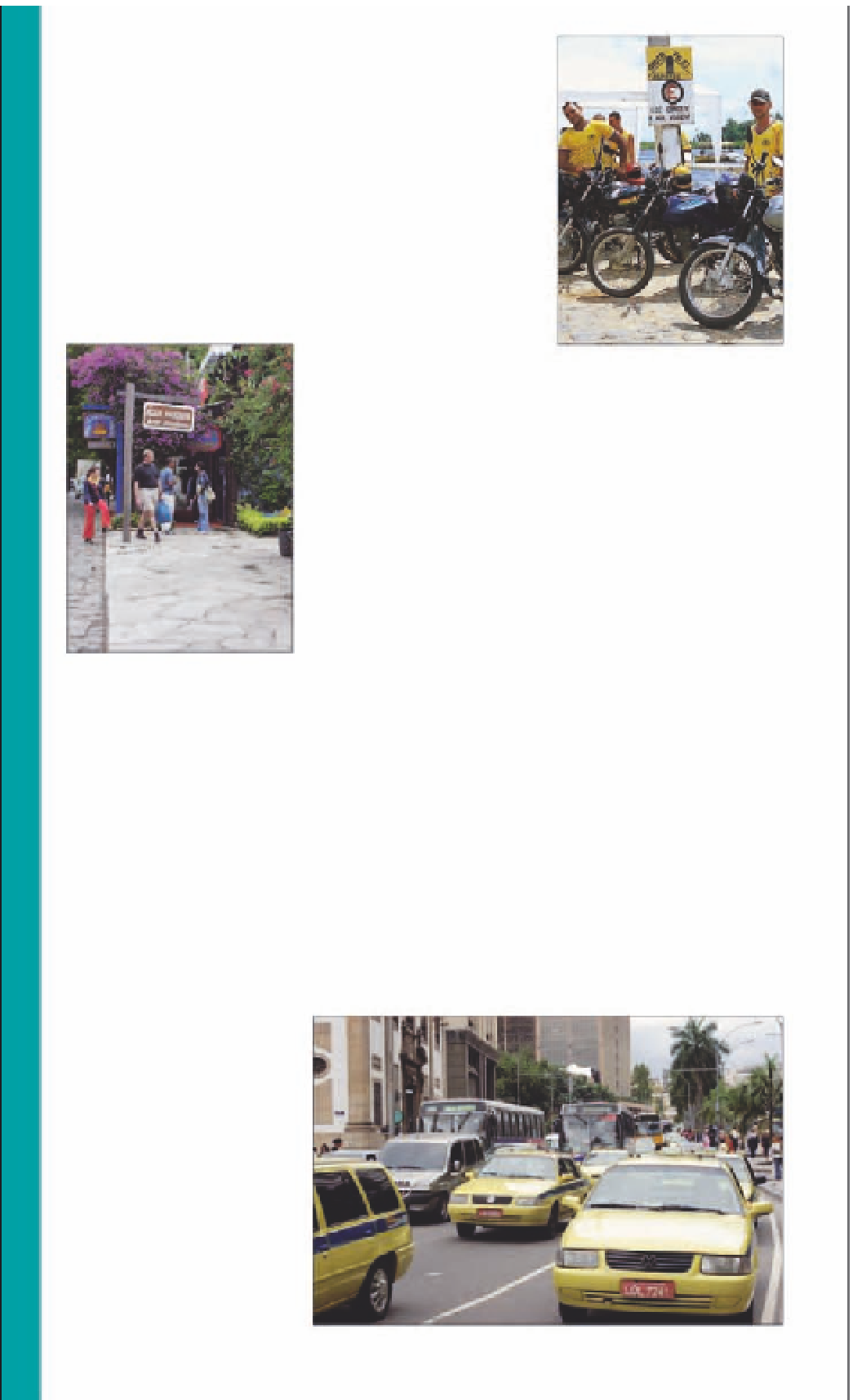Travel Reference
In-Depth Information
Getting around Brazilian Towns
Public transportation in Brazil varies greatly from city to
city and region to region. Large cities such as São Paulo
and Rio de Janeiro have modern metro systems that
offer quick access to many parts of the city and decent
bus systems. However, in most cities and towns, the
main mode of transportation is the bus and its varia-
tions, such as minivans and minibuses. Taxis are
plentiful and quite affordable. In very small commu-
nities where there is little in the way of regular public
transportation, people often use motorcycle taxis
(moto-taxis). It is a cheap and fast one-person ride.
TAXIS & MOTO-TAXIS
Moto-taxi stand in Camamu with
moto-taxi drivers
Taxis are affordable and a
quick mode of transportation.
Prices generally run 50 to 70
percent lower than in Europe
or North America. Most taxis
work on the meter. When
starting the ride, make sure
that the meter is cleared and
shows “tariff 1” except from
11pm to 6am, Sundays, and
in December when “2” is
permitted. Drivers sometimes
“forget” to start the meter and
end up charging a flat rate.
The only taxis allowed to
charge a flat rate are radio
taxis or cooperatives at
airports, bus stations, or other
specific locations. The price
will be set before the
passenger gets in. Rates are
typically 30 to 40 percent
higher than regular metered
taxis, but you know what the
final price will be. Although
these pre-paid taxis are not
a bargain, they may be good
value when taking a taxi from
the international airports in
Rio de Janeiro and São Paulo
(see p435)
, where taxi drivers
have developed the
unfortunate habit of taking
advantage of tourists who
don't speak Portuguese and
aren't familiar with Brazil.
In most cities, taxis can
be hailed on the street or
at numerous taxi stands.
Renting a taxi for the day is
an inexpensive alternative to
renting a car. The price is
negotiated with the driver.
Taxis in small towns do not
have meters, so it is best to
agree upon a price in advance.
Another option in smaller
towns is the moto-taxi, or
motorcycle-taxi. The driver
carries an extra helmet and
the passenger just hops on
the back and rides pillion
after fixing a price.
Visitors exploring the town of
Búzios on foot
ON FOOT
Visitors to Brazil often seem
preoccupied with street crime.
What they should really worry
about is traffic. Pedestrians
get little or no respect. It is
safest to assume that cars
have the absolute right of
way everywhere at all times.
Even when the pedestrian
has the right of way, such as
when crossing with a green
light, extreme care should
be exercised at all times.
After dark, or when traffic
is light, or when police are
absent, cars tend to run red
lights. Also, when making a
right turn, cars rarely give
preference to pedestrians
trying to cross. Pedestrians
should also be aware of bikes
or motorcycles that may go
down the wrong way on a
one-way street. Always look
both left and right.
Motorcyclists often weave
in and out between the cars
at high speeds. Be very
careful when walking in
between stopped or slow
moving traffic.
METRO
The metro is the safest form
of public transport in Rio and
São Paulo. Both cities have
metro systems that are very
convenient for visitors, as
they offer quick and reliable
transportation to a number of
Yellow Rio taxis, plentiful and relatively inexpensive






































